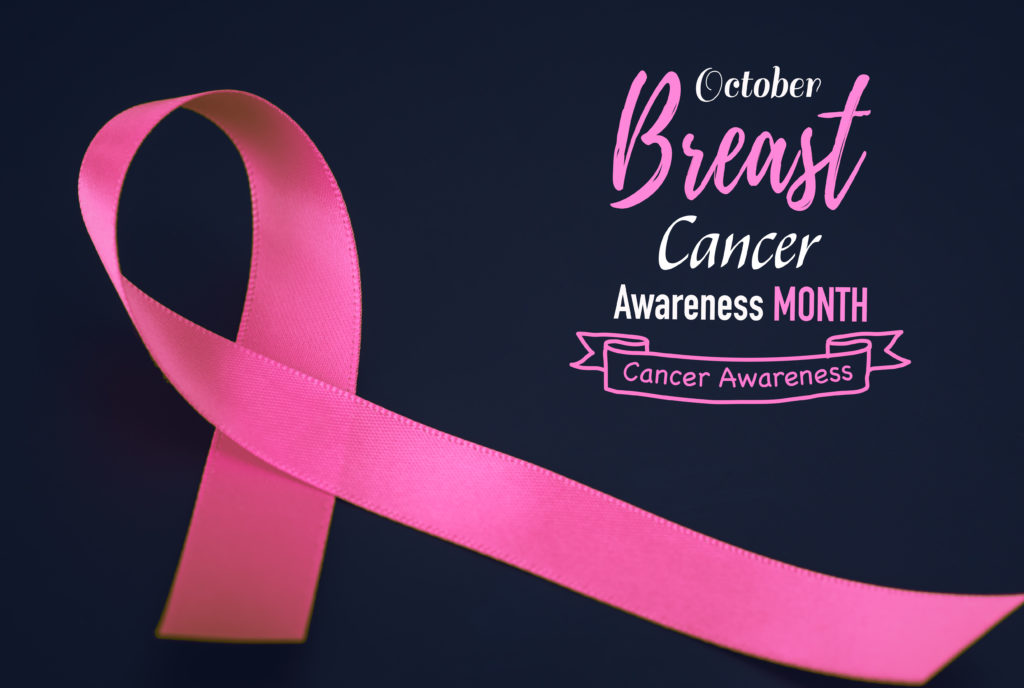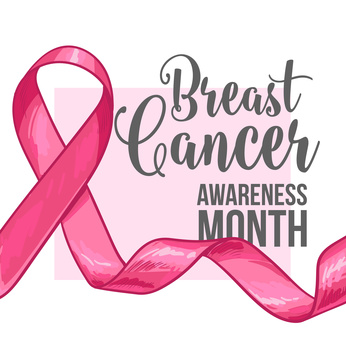October is breast cancer awareness month – and if you aren’t checking yourself regularly, than this is your reminder to do so. This year (2019) marks the 26th anniversary of the pink ribbon, which is a symbol of millions of people affected by cancer.

Breast cancer is the most common cancer affecting women in the world, and due to that, women around the world are urged to get to know their breasts. By doing this, they can spot any changes at an early stage, and if they notice something different, they can get checked out immediately.
The most crucial thing is knowing the warning signs that you should look for. This helps in earlier detection of breast cancer, and consequently, start effective treatment at an early stage, and ultimately save a life.
There is no ‘correct’ way for you to check your breasts. Therefore, the best thing to do is to look and feel your breasts regularly; hence, any changes to your breasts can be spotted quickly. It doesn’t have to be a lump for you to be alerted. It can be anything new or different on your breasts. As a matter of fact, just 10% of lumps are cancerous, meaning the other 90% is made up of new or different look and feel of your breasts.
Nonetheless, it’s important to note that most breast changes are likely to be normal. That means some changes can be linked to your menstrual cycle or other non-cancer breast conditions like cysts. However, the motto still remains – “get checked out with your GP if you notice something unusual.”
What to look out for?
Although only 10% of breast lumps are cancerous, it is essential to get checked out by your doctor in case of persistent lumps. Other than lumps, the following are signs to look out for;
- A swelling or lump in the upper chest, breast, or armpit
- A change in the color of your breast – your breast may look inflamed or red
- A change to the skin on your breasts such as dimpling or puckering
- A nipple change, for instance, it has become inverted or pulled in
- Crusting or rash around the nipple
- Changes in the shape or size of your breast
- Unusual discharge (the discharge can be milky, watery, or yellow fluid) from either nipple
- Pain in your armpit or breast that’s there almost all the time
How to check your breast?
Another essential thing to know apart from the signs is how to check your breasts. The first thing to note is that you should examine your breasts at least once a month. Nevertheless, the appropriate time for you to check your breasts is after your period ends. At this time, your breasts are least likely to be tender and swollen. If you are no longer having periods, then pick a day that’s easy to remember, let’s say the first or last day of the month.
The following are steps you can use for self-examination:
- Start by looking at your breasts in the mirror while your shoulders are straight and your arms on your hips. Here, look at the shape, color, size, and any of the signs listed above, like puckering, dimpling, and bulging of the skin. Proceed to look for the same changes now with your arms raised.
- Next, lie flat on your back and feel your left breast by using your right hand. Use a smooth but firm touch and cover the area, starting from the collarbone to the top of the abdomen and from the armpit to your cleavage. For the tissue and skin just beneath your breast, use light pressure; for the tissue in the middle of your breast, use medium pressure; and for the deep tissue in the back, use firm pressure. Once you’ve reached the deep tissue, you’ll start feeling your ribcage.
- Repeat the above step now by feeling your right breast using your left hand.
- Lastly, feel your breasts while standing up using the second method.

Final Thoughts
Breast cancer claims a lot of women’s’ lives around the world. Therefore, knowing the warning signs is an essential thing to do for you to detect this chronic disease at an early stage. The disease can also occur in men; however, it’s only a small percentage. Statistics put the percentage at 340 men diagnosed each year, which is less compared to 60,000 women each year. Regardless of your age, it’s vital to get to know your breasts’ look and feel.
Let’s spread the word and save a life out there!


